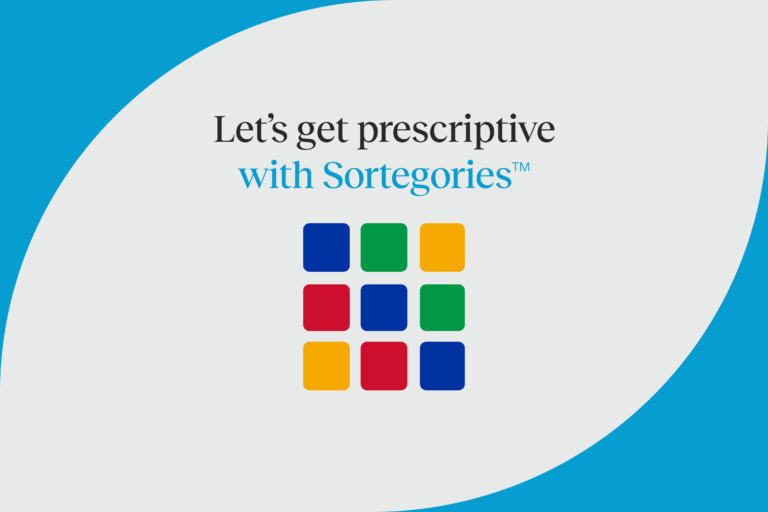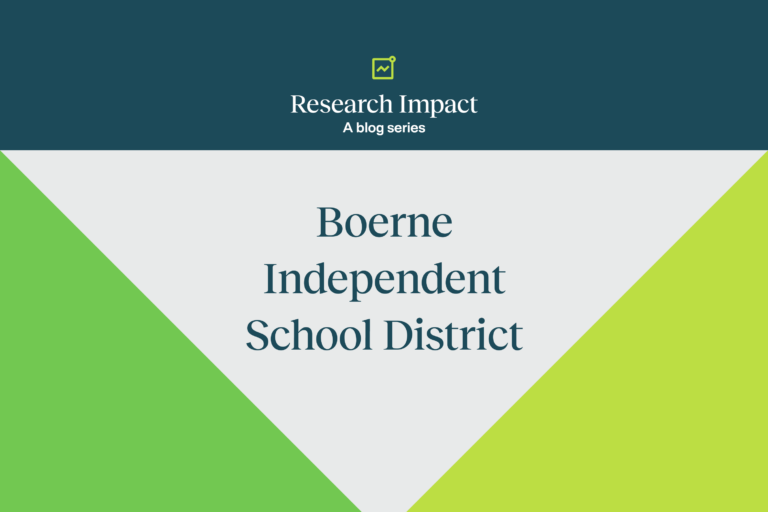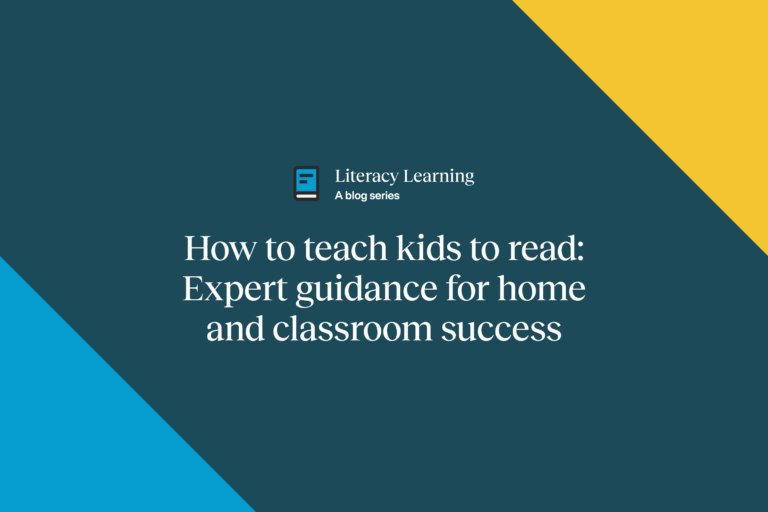The importance of teaching foundational reading skills
Discover how foundational reading skills lay the groundwork for a lifetime of literacy success. Learn from 95 Percent Group's literacy experts.

Multidisciplinary research has confirmed that 95% or more of students can learn to read when provided with high quality, evidence-aligned instruction. Yet, too many students today are not learning to read. The most recent Nation’s Report Card found 65% of 4th graders reading at or below basic levels. And according to EAB’s 2020 “Leading for Literacy,” 60% of elementary teachers have not been fully trained in strategies for teaching the foundational reading skills—phonemic awareness, phonics, vocabulary, fluency, and comprehension.

We know that students with the lowest levels of literacy face school challenges that will compound into lifelong challenges if we don’t get this right. Effective instruction holds the key to equitable opportunities for all of our nation’s children.
Laura Stewart
What are the key foundational reading skills?
There are five key foundational reading skills to help students improve their reading proficiency: phonemic awareness, phonics skills, reading fluency, vocabulary, and reading comprehension. These help lay the groundwork for the foundations of reading. The skills are vital to ensuring students learn and grow to become empowered independent thinkers.
1. Phonemic awareness
Phonemic awareness is defined as understanding that words are made up of speech sounds or phonemes, the smallest parts of sound in a spoken word. The ability to hear, identify, and manipulate individual sounds in spoken words, and understand their relationship to letters is a fundamental step towards mastering reading.
2. Phonics skills
Phonics skills are the ability to perceive the connection between letters and phonemes when reading. Using phonics helps students learn and recognize written and spoken words which helps them become more independent readers.
3. Reading fluency
Reading fluency is the skill that enables students to read a text accurately, quickly, and with expression. Without strong fluency skills, students will be challenged to comprehend what they read, especially as they move through grades and expand their subjects of study.
4. Vocabulary
Vocabulary describes the group of words that people recognize, understand, and use. Having an expansive vocabulary gives people the tools to read more efficiently and comprehend more at the same time.
5. Reading comprehension
Reading comprehension is a skill that allows readers to have a deeper understanding of the text they’re consuming. Teaching students comprehension helps them interpret text more clearly and take on a deeper level of understanding.
All together foundational reading skills are paramount to creating self-sufficient readers. Defining and understanding the terms above is the first step in this educational process, but it’s just as important to find and incorporate the best ways to teach these skills. Teachers need to have the resources to take these collective terms and integrate them properly in a classroom setting.
The critical role of phonemic awareness
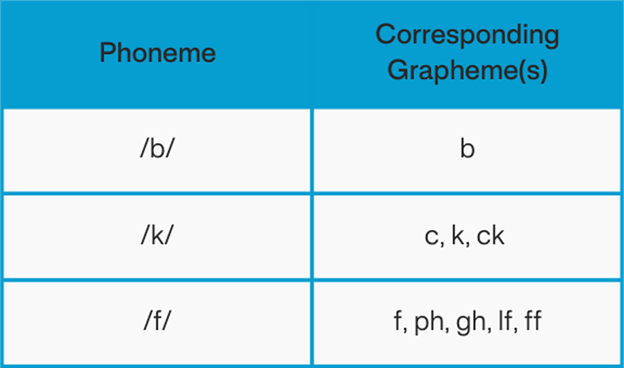
Phonemic awareness plays a critical role in helping students become proficient readers. A crucial part of this skill is recognizing and knowing what phonemes are. Phonemes are represented in the written language by graphemes. Graphemes can be individual letters or groups of letters that represent single sounds.
For example, let’s look at a simple word such as mat. When broken down, the word has three phonemes: /m/ /a/ /t/. For a more complex word, the word think has three phonemes: /th/ /i/ /nk/. After phoneme recognitions, phonemic awareness takes that skill one step further by teaching students the ability to comprehend how spoken words correlate with letters.
The significance of learning the different components of phonemic awareness has been overlooked in the past. We now know that this critical, foundational skill can mean the difference between a student who is highly fluent when reading more sophisticated and complex texts, and one who struggles to decode unfamiliar words in this same scenario. Reading research has shown that underdeveloped phoneme awareness is consistently associated with poor reading and spelling (Fletcher, Lyon, Fuchs, & Barnes, 2019).
Phonemic awareness activities
Mastering phonemic awareness skills provides a strong base for all the other foundational skills. Phonemic awareness tasks include:
- Isolating phonemes
- Blending onset-rimes
- Blending phonemes
- Deleting phonemes
- Segmenting words into phonemes
- Adding phonemes
- Substituting phonemes
There are wide-ranging activities you can do to teach students phonemic awareness.
Phonemic identification mat
One key strategy in teaching kindergartners and 1st graders is using the “I do, We do, You do” (IWY) teaching method with a phonemic identification mat. Using vocal cues along with visual cues such as pictures and shapes can help break down phonemes for students.
Starting with “I do” you can point out a picture, speak the word, and then break it down into shapes for your students. Do a second word on your own and then invite them to do the next word together with you. Finally, invite the students to do some on their own with any assistance. As they grow in their skills, you can remove pictures and focus solely on the shapes while speaking the words.
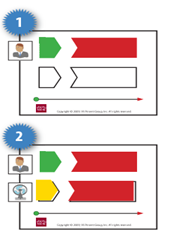
Lip cue cards
Another way is to give students close-up pictures of people’s faces. These lip cue cards will show the pronunciation of different phonemes and provide students with a visual of how they should be shaping their mouth, lips, tongue, and teeth. You can have your students speak each phoneme while showing them the image of how it should look and feel as they say it.
There are many other activities and games you can do to help students build upon their phonemic awareness skills. Our 95 Phonemic Awareness Suite™ is made up of dozens of lessons and includes many additional activities along with the resources to do them such as manipulative chips and mats, sound spelling cards, and more.
Nurturing phonics skills
In phonics, we move from a focus on the spoken language and speech sounds in phonemic awareness, to a focus on the written language. Students study the relationship between letters and letter sequences, and the sounds they represent. Science of reading experts agree that the most effective way to teach reading includes systematic, explicit instruction in phonics and decoding (Brady, 2020; Castles, Rastle, & Nation, 2018; National Institute of Child Health and Human Development, 2000).
For example, at the start students are simply taught single-letter sounds such as recognizing “a” in “apple”, while also understanding the sound /a/ is written as the letter “a.” From there, instructors can begin to dive deeper into digraphs, consonant blends, diphthongs, silent letters, and more.
Instruction on this skillset normally begins in kindergarten and will continue through at least third grade. Students need to be taught phonics so they can learn how to decode words accurately. Not only will this help them become stronger readers during a pivotal part of their reading journey and education, but this will foster a lifelong skill, providing people with the resources and methods to understand new or unknown words.
“We want to make sure we’re not just teaching kids phonics for the sake of phonics skills,” said 95 Percent Group Chief Academic Officer Laura Stewart. “We’re applying those skills in authentic reading and writing.”
Activities to build phonics skills
There are several phonics tasks or activities to help lay foundational reading skills for children. Instructors need to assess where readers are struggling with their phonics and decoding skills to determine the best place for instruction to begin and the best methods for teaching these skills. There are all types of engaging, educational activities to build phonics skills.
Initial sound picture sorts
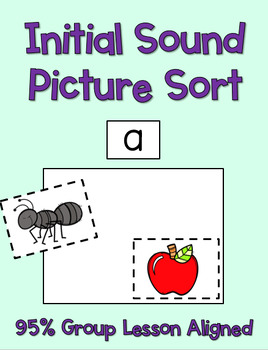
This multisensory game can be played with Kindergarteners. The game will include paper images that can fit each initial sound. For example, there will be an image of a cat to be sorted with the letter “c”, and there will be an image of a dog that can be sorted under the letter “d”.
The teacher will provide different containers, so the students can sort the images that correspond with each specific letter. When the teacher says the word aloud, the students will determine which picture corresponds with the word, then figure out the starting letter, and sort it into the correct bin.
The benefit of using manipulatives to master phonics patterns has long been established, especially with struggling readers. Research supports the use of multisensory instructional techniques to engage students, and improve their performance.
Multisyllable Routine Cards
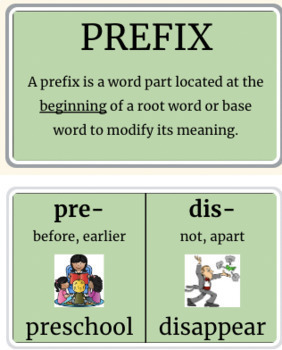
Multisyllable Routine Cards are designed for students in third grade and above to help students who are struggling with multisyllable words. These flashcards are used to help break down multisyllabic words for students while also defining them.
Routine cards like these can be used in a wider classroom setting but also can be useful for small groups or individual students. These time-efficient routines utilize explicit and direct phonics instruction to help students improve their skills in decoding longer words.
We recognize the importance of phonics instruction, and believe it’s important to continue learning phonics skills throughout elementary school. We have designed a science-backed 95 Phonics Core Program® for teachers to use when teaching Kindergarteners through fifth graders.
Building reading fluency
Fluency is a foundational reading skill that not only improves readers’ understanding of the text they’re looking at, but it inspires them to keep reading more. By more easily comprehending text, fluency skills help students read faster, more accurately, and with better automaticity. The NICHD research review confirmed that repeated reading and guided repeated oral reading show strong evidence of improving fluency.
It’s essential to monitor student fluency so you can assess progress on a daily basis. With frequent timely assessments, teachers can effectively guide and redirect instruction when necessary.
Letter and word fluency instruction can begin as young as Kindergarten and will continue well past elementary school. While there’s no set age when children become fluent, there are research-backed activities to help students build reading fluency such as:
- Telling students unfamiliar words as they encounter them so they can focus on constructing meaning and reading with fluency (Shany & Biemiller, 1995).
- Helping students group words in a sentence into meaningful phrases (Taylor, Wade, & Yekovich, 1985).
Reading fluency strategies
Reading fluency strategies in the classroom can vary from modeling (the IWY approach) to building these skills through fluency games and activities. Modeling allows teachers to show students how sentences should sound when it comes to phrasing, intonation, and expression. Meanwhile, fluency games and activities like the two below give students an interactive opportunity to improve their fluency skills.
Word fluency game
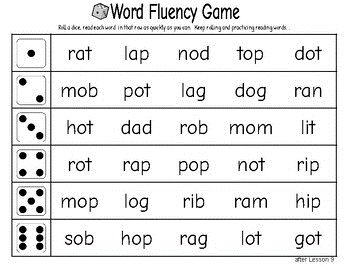
A word fluency game like the one above can help children as young as Kindergartners build upon their fluency skills while expanding their knowledge of CVC words (consonant-vowel-consonant). For a game like this, the teacher will provide a sheet of paper that shows different CVC words next to different numbered dice.
Students will then roll dice to determine which row of words they’ll read. The game can be turned into a competition by timing the students or giving them points for the number of words correctly read. This versatile game can be completed in small groups or a wider classroom by having students read the words in each row together.
Fluency pyramid
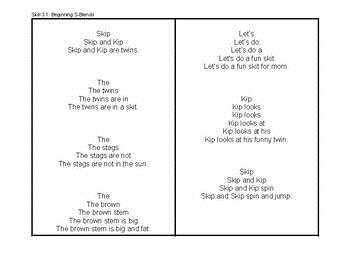
A fluency pyramid is a skills-based activity meant for students in third grade or older. The pyramid starts with a simple word. From there, students will read the next row below which will include two or more words, expanding the initial sentence. The pyramid of words will continue to expand until there is a complete sentence.
Students can start by quietly reading the word pyramid to themselves in their heads or out loud. After making sure students can understand the words and the order, teachers can then time the students and have them read the word pyramid out loud. During this second reading, students should be encouraged to read without pausing, as smoothly as possible.
Finally, students will read the pyramid for a third time, but this time instructors should encourage them to read it as if telling a story to work on their intonation, phrasing, and expression.
Expanding vocabulary
Direct vocabulary instruction is more than just definitions. More than 70% of struggling readers have trouble with accurate and fluent word recognition. Students with limited vocabulary will struggle with reading fluency and comprehension. For students to close the vocabulary gap, they need vocabulary instruction that both teaches the meaning of well-chosen words and shows them how to learn words on their own.
Instructors should begin teaching students vocabulary when they are in Kindergarten. By targeting these young students, educators can begin laying the foundation for vocabulary development while helping students build a rich vocabulary. Expanding vocabulary at a young age can also lead to academic success, helping students become stronger critical thinkers with more sophisticated writing skills.
Tips for expanding vocabulary
As students grow in their reading knowledge, a key way teachers can help their students expand their vocabulary is to expose them to new and unfamiliar words. That can be done through introducing students to new stories and texts, but also through games and activities.
Suffix mat
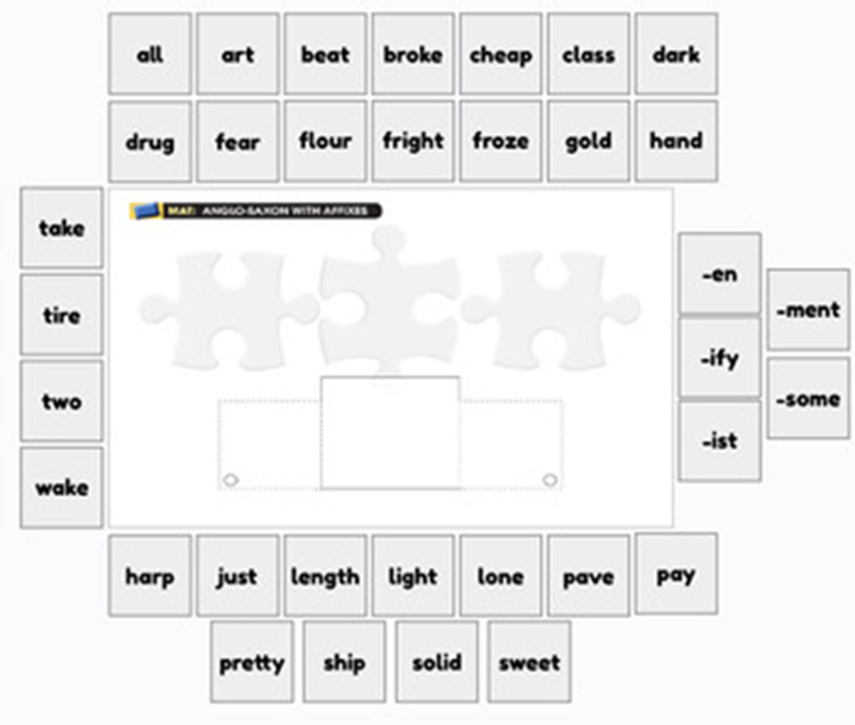
One activity that can help build the vocabulary of students is a suffix mat. This manipulative is a visual aid to assist in word construction and vocabulary expansion. It is commonly used for students beginning in third grade. This normally is a printout or digital image with a variety of suffixes along with root and base words.
In this activity, students will need to choose a root or base word first. Then, they’ll add a suffix on to make it into a different word. For example, they can merge the words “tire” and “some” to make tiresome or “ship” and “ment” to make shipment.
These types of suffix mats aren’t only limited to suffixes. The mats can also be designed and used for prefixes as well.
Vocabulary tests
Vocabulary tests are a simple method of instruction to get a pulse on how students are doing with their vocabulary. Part of the test can include 10 different sentences, each missing a word. Students will need to use their comprehension skills to determine which word makes the most sense within each sentence.
These tests should also include a section with a list of 10 words. To the right, the students should write the correct definition for each word. A vocabulary test will ensure that students are learning and retaining vocabulary.
Vocabulary instruction is essential as students learn to diversify their vocabulary across subjects and categories. Here at 95 Percent Group, our team has created 95 Vocabulary Surge™: Level A and Level B, to provide educators with vocabulary in language arts, science, and even social studies for students grades second through eighth.
Ensuring comprehension
Reading comprehension is a vital foundational skill set. It empowers students to deduce the meaning of new text by using their previous knowledge, and by making inferences. Comprehension processes include:
- Connecting
- Questioning
- Predicting
- Imaging
- Inferring
- Determining importance
- Synthesizing
Explicit comprehension instruction leads students to become more informed and engaged readers (National Reading Panel, 2002). It promotes higher-level thinking by giving them the tools to better interpret text through a critical thinking lens. This skill not only helps students academically but fosters stronger communication and problem solving skills.
To ensure comprehension, students should begin to be taught this in a classroom setting as early as kindergarten, to help students transition from learning to read to reading to learn. It can become part of the earliest stages of reading development instruction by inviting students to talk about a story or guess what they think will happen next based on pictures or context clues.
How to improve comprehension with foundational reading skills
Other foundational reading skills can work together in tandem to help improve reading comprehension. Comprehension can only improve as students do things like grasp more vocabulary and use their phonics skills to decode words they don’t know. There are numerous comprehension games and activities you can do with students beginning in kindergarten.
Decodable passage
Decodable passages are a great activity to build reading comprehension skills for students as young as kindergarten. These passages include a short story. After reading the story, students can then work on comprehending the passage by answering questions about it.
An activity like this can be done individually, but also in small groups or with the entire classroom. It helps students break down the story, but also form their own opinions about the characters and text.
Character map
A character map is a good activity to help sixth graders with reading comprehension. After reading a story, instructors can either hand out a worksheet or have students write down observations about characters. It can include details such as the problems the character is facing, the goals they are working toward, what they’ve done in the story, how it turned out for them, and the themes.
This can be expanded to include more than just a character map, including other story elements as well. To learn more about this story mapping activity, and other comprehension games and activities, we’ve put together a list of nine additional reading comprehension games and activities for the classroom.
Benefits of strong foundational skills
There are lifelong benefits to learning and understanding foundational reading skills. These skills propel students toward academic success across all subjects, but it goes further than that. Having a firm grasp of foundational skills in reading leads to better communication abilities, as well as a deeper growth when it comes to social and emotional awareness. These skills empower readers to consume diverse perspectives, teaching them how to empathize with the stories of others while experiencing complex emotions.
Outside of personal growth and enrichment, foundational literacy skills also help communities too. Literature leads to a deeper cultural understanding, exposing people to diverse experiences and viewpoints. It also fosters civic engagement and sets students up for success in their chosen career fields. At the end of the day, reading builds communities, drawing people closer together.
An ecosystem approach to foundational reading skills
An ecosystem approach to foundational reading skills ensures that both teachers and students share a common language and routines. The One95 Literacy Ecosystem™ includes professional learning, assessment, and instructional resources so that teachers can turn the science of reading theory into practice and help each child make progress. It makes the experience across products and tiers of instruction as seamless as possible for students and teachers—all products and tiers share a common language—they all use the same routines, procedures, and descriptions.
Pennsylvania elementary school Principal Robert Palazzo sums up the effect of such a holistic and cohesive system:
“95 Percent Group has allowed for a common language. For example, everyone knows that skill 6 is regular vowel teams—whether you’re doing the 95 Phonics Screener for Intervention™ (PSI™), the 95 Phonics Lesson Library™, or the 95 Phonics Chip Kits™—we are able to clearly speak about a student’s skill level and what they need and intervene at a high level.”
Once both teacher and students know the routines, students can really concentrate on the learning and the teacher can concentrate on the students’ responses and make those important next-step decisions.
One95 Literacy Ecosystem
Engaging and evidence-based, the One95 Literacy Ecosystem equips educators with a comprehensive toolkit to unlock the power of literacy for every child. Based on the science of reading and backed by nearly two decades of research, the One95 Literacy Ecosystem is proven to advance reading skills in students from diverse backgrounds, grades, and abilities.
The One95 Literacy Ecosystem features:
- Solutions for every tier, grade, and student literacy need
- Instruction aligned with MTSS/RTI frameworks
- Research and insights on the science of reading
- Courses, workshops, and more for professional development
- Access to literacy experts
Read more
Real-life foundational reading success stories
Read our district spotlight about Fulton County in the Atlanta metro area. It’s the fourth largest school district in Georgia. Recognizing that they were leaving too many students behind, they put the 95 Phonics Core Program® in every K-3 classroom in the district. They followed that with other resources in the One95 literacy ecosystem including 95 Vocabulary Surge–Unleashing the Power of Word Parts™. The results? Transformational growth at all grade levels.
Explore more 95 Percent Group success stories here.
How 95 Percent Group can help with foundational reading skills
95 Percent Group brings over two decades of thought leadership in the science of reading and evidence-aligned assessment and instruction in the five foundational skills of phonemic awareness, phonics, fluency, vocabulary, and comprehension. We have worked with school districts and educators across the country to unlock the power of literacy for every child. We look forward to sharing with you what we’ve learned, along with best practices and resources you can bring to the classroom. Make sure to explore our many opportunities for professional learning.
Our literacy experts are here to help. Contact our team to learn how the One95 Literacy Ecosystem can transform your reading instruction.
